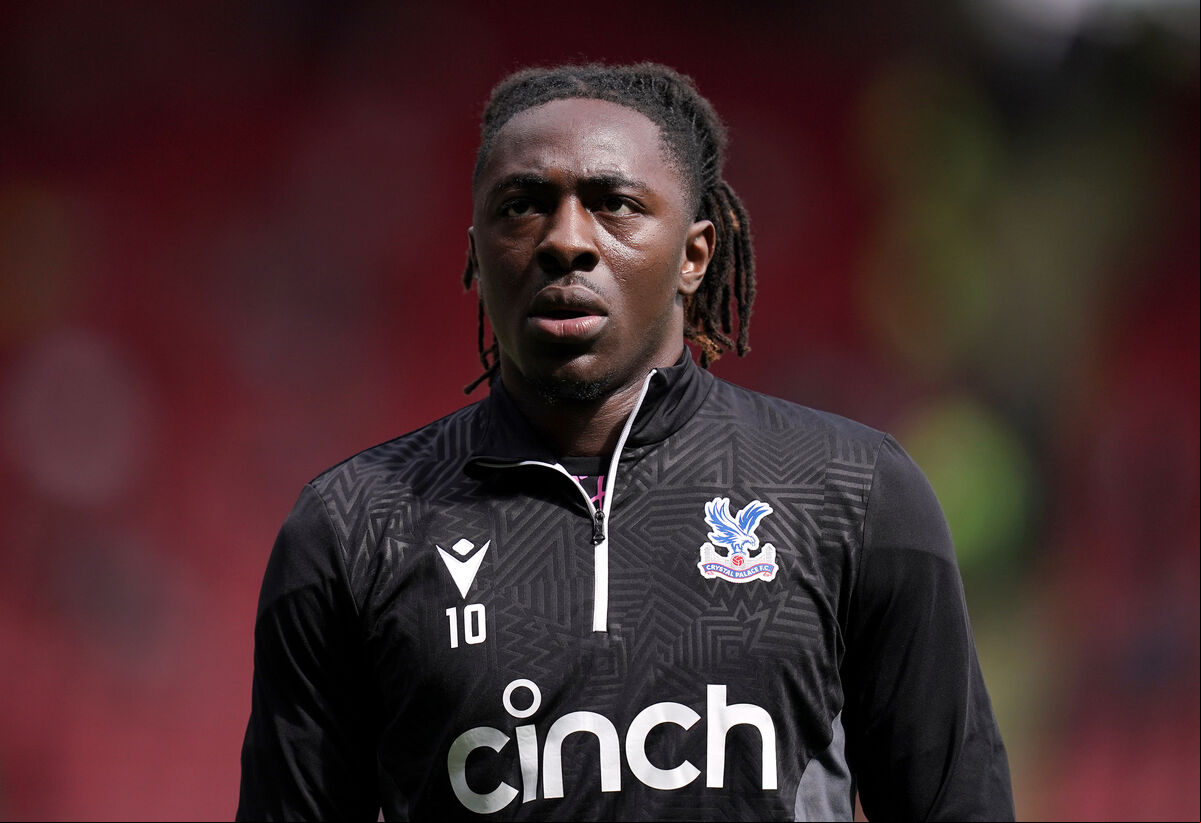Premier League: It's crazy not to use VAR when you have it

Brentford manager Thomas Frank (centre) applauds the fans after the final whistle following their Premier League win over Crystal Palace at the Gtech Community Stadium, Brentford. Picture: John Walton/PA Wire
A new season but it seems many of the same old issues the dogged the previous years.
The problems associated with referees and their interpretation of VAR and when to use it cropped up once again. And in one particular situation the act of not using the technology was the cause of controversy.
Sunday afternoon’s Premier League London derby between Brentford and Crystal Palace had the promise of an exciting outcome with two accomplished sides who often find themselves in that zone at mid table, where a result here or there can mean the difference between a tilt at a European qualification spot or a slip down into a relegation battle. Making the most of matches against sides around you in the table then becomes all the more important as a positive result may mean a six-point swing in fortune, come the end of the season. Even more reason that the calls of the match-officials be at their best.
This late summer encounter lived up to its billing, with both sides giving it a good rattle with probably Palace being the more impressive, especially when you consider they were the away side.
Palace’s Eberechi Eze has been quite a find for The Eagles, and he was at his most dangerous from early dead-balls as they mounted the pressure on Brentford.

In the 26th minute, a Palace free-kick from outside, and right, of the Brentford box saw Eze size-up the situation. Minutes earlier, the same English striker had seen another of his free kicks, from a similar situation but from the left of the box, just slip past the Brentford goalpost.
Not learning their lesson, Brentford stacked the box with defenders for this next free kick, while goalkeeper Mark Flekken held his central position in goal, covering any threat from the players in the box in front of him, unwittingly leaving a gap at his near post which Eze astutely spotted.
Eze floated a lovely curving ball over the defenders and around the despairing grasp of Flekken. It was a lovely opportune goal, but Eze’s delight was short-lived as it became clear that referee Samuel Barrott had blown the whistle while the ball was in flight, over what he saw an infringement in the box. Replays showed that Palace’s Will Huges got in tangle with Brentford’s Irish international defender Nathan Collins inside the Brentford box. It was enough for Barrott to rule out Eze’s lovely and clever strike and that was that.
However, those same replays showed that there was little to no infringement between the players and at worst you could describe it as the ‘coming together of players’ rather than any foul. The logical thing to do would be for the VAR team to look again at the events around the disallowed goal and if one would be fair, allow the goal to stand instead.
But the VAR team were not even given the opportunity to do so and the wrong decision on the field stood.
The Premier League Match Centre tweeted the explanation in its live match feed: ‘The referee awards a free kick to Brentford for a foul by Hughes on Collins. The whistle was blown before the ball entered the goal, so VAR cannot intervene and the referee’s call stands.’ Again, one must ask, what’s the point of the technology if it’s not going to be used? The authority of the referee would not be diminished for doing a review. The integrity of the result is surely more important than hurting the professional feelings of the man in black.

To be fair, you could see how Barrott came to his decision there was a lot of tumbling and pushing going on by players from both sides in the box, but none of it was over the top or illegal to the game. Still in the confusion you could see why the ref blew his whistle. No one expects infallibility from the referees, that’s why VAR was introduced. It just seems insane then to ignore the opportunity to right a wrong when the chance was there.
The ruling behind the decision to not have a review is explained by the International Football Association Board’s (IFAB) Laws of the Game that states: “Officials must always make an initial decision as if there was no VAR” with the caveat that “delaying the flag/whistle for an offence is only permissible in a very clear attacking situation when a player is about to score a goal or has a clear run into/towards the opponents’ penalty area”.
Clear enough to explain why denying a goal by the referee is allowed but ambiguous enough on its caveats as to what’s deemed an ‘attacking situation’ or ‘run into a penalty area’ for the referee to delay his decision.

The day before, Everton were awarded a penalty against Brighton at Goodison Park, when Dominic Calvert-Lewin appeared to be brought down in the box. Referee Simon Hooper awarded the spot-kick only to be told in his earpiece to look at it again. After consulting the VAR pitch-side screen, he rightly reversed his decision on the penalty. It was a simple and effective piece of officiating and justice was seen to be done. No one thought less of Hooper for taking the time to use the resources available to come to the right decision. The only differences between the situations was when the whistle was blown. It seems crazy to rely on the very old whistle test, when the brand new tech was sitting there waiting to be used.
Another season another year of complaining about VAR calls and lack of calls. The match at Gtech Community Stadium ended in a 2-1 win for the Bees. Let’s hope it won’t prove too costly for Palace come May.










 App?
App?







